Bays & Estuaries Where Rivers meet the ocean

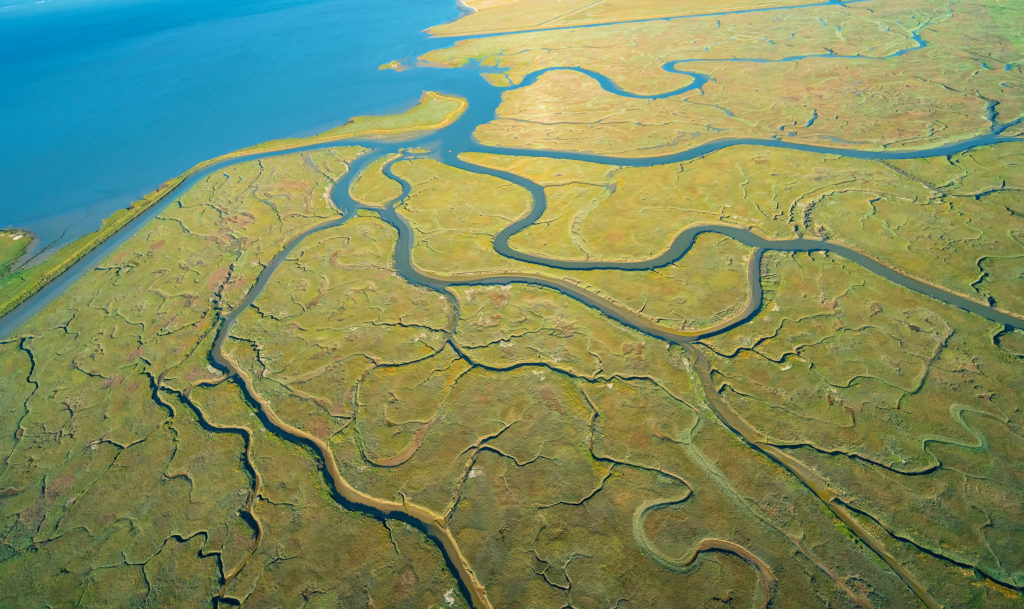
Bay & Estuary Outcomes
-
List the correct order of habitats from river to ocean.
-
Distinguish between bays and estuaries.
-
Describe estuary productivity and relate it to migrating animals.
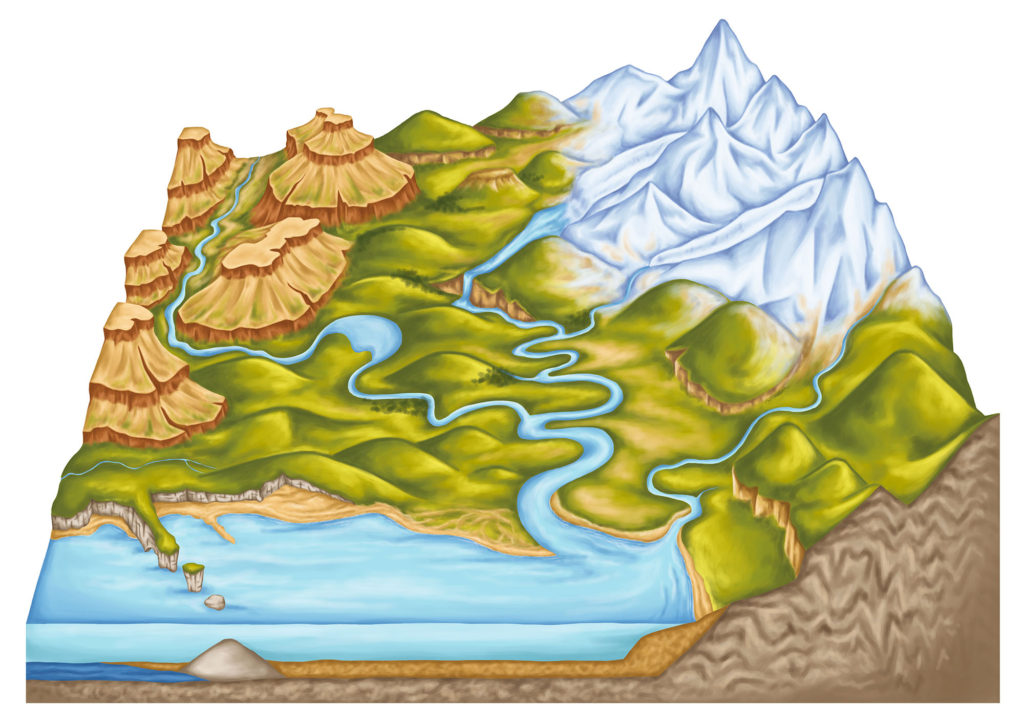
Precipitation over land heads downhill to the oceans. Small streams join together to form large rivers.

Before entering the ocean, many rivers spread their water over a large area of estuary, a type of wetland. These estuaries can empty directly into the ocean, but they often flow into a protected bay that becomes the ocean.
On the Atlantic Coast of North America, several rivers, including the Potomac River by Washington D.C., empty into estuaries, that fill Chesapeake Bay, which joins the Atlantic Ocean.
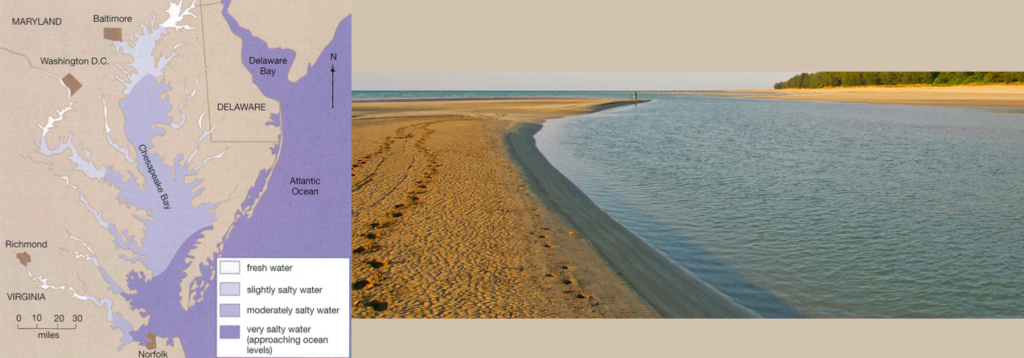
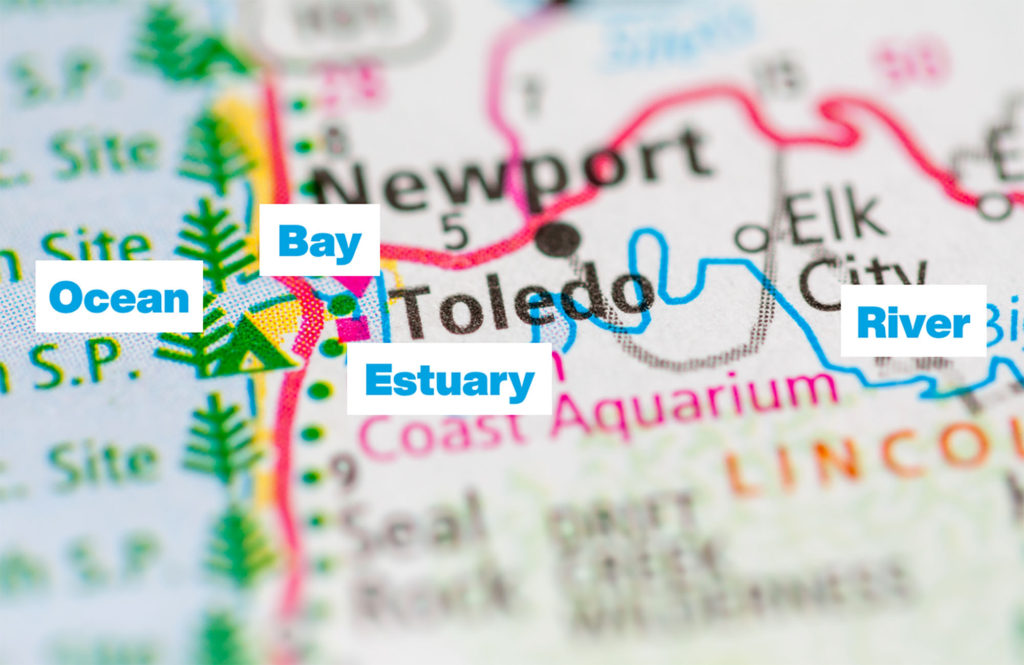
In Oregon, this river-estuary-bay-ocean order can be observed as you drive from Corvallis directly out to Newport on Route 20.
Toledo has a significant estuary, The water is a mix of river freshwater and saltwater that moves in with the tides. The closer to the ocean, the saltier the water.
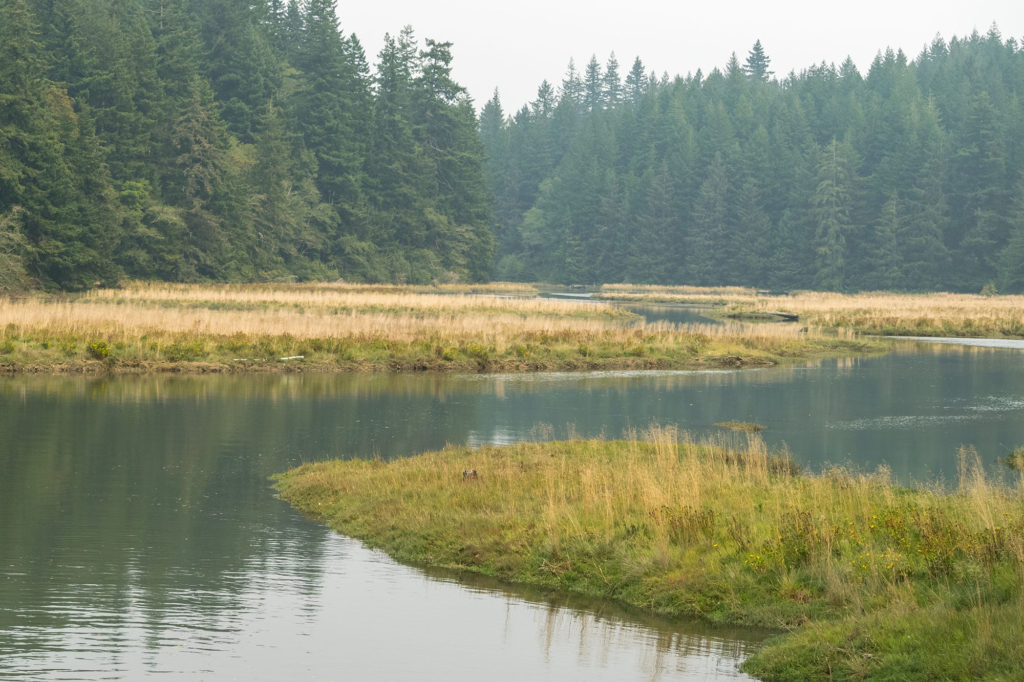
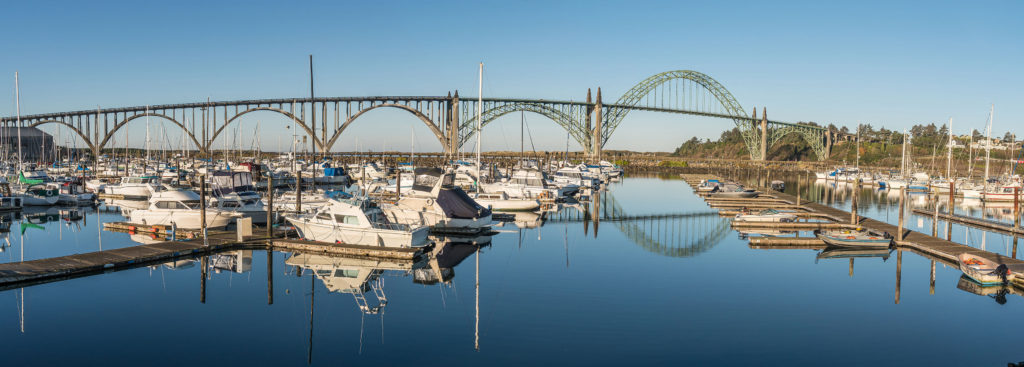
Newport is built around a bay that protects marine mammals like sea lions as well as a variety of fishing vessels.
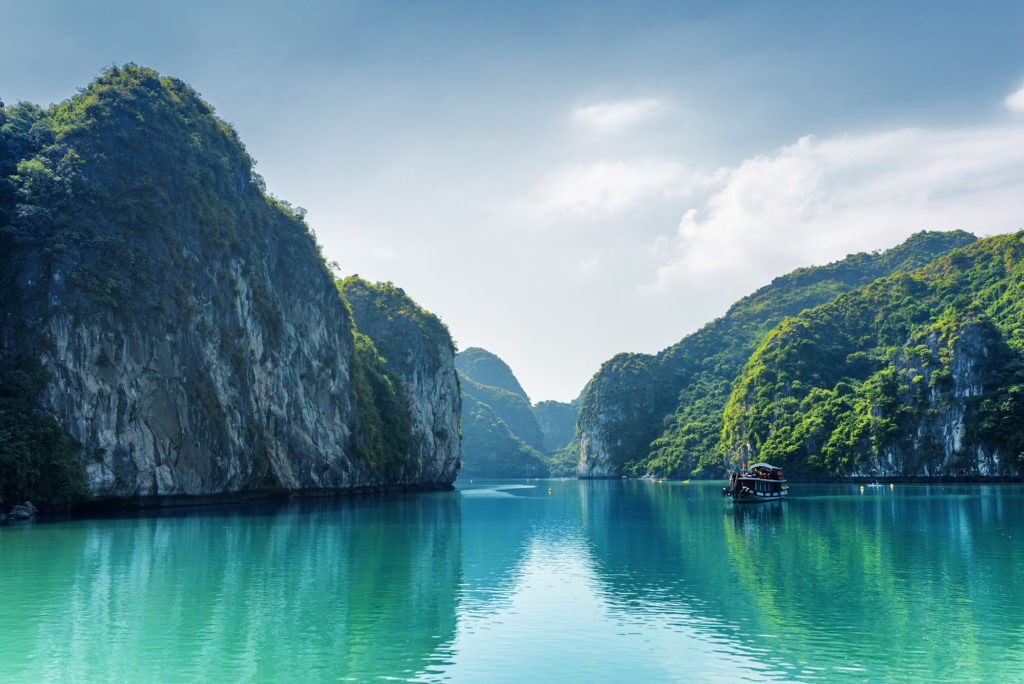
Bays typically have similar water chemistry and organisms to the ocean, the distinction is wind and wave protection within the rocky outcrops.
Around the world bays have played an important role in harboring ships in relatively calm waters. If estuaries are dredged into channels, boats can travel upstream to riverside cities.
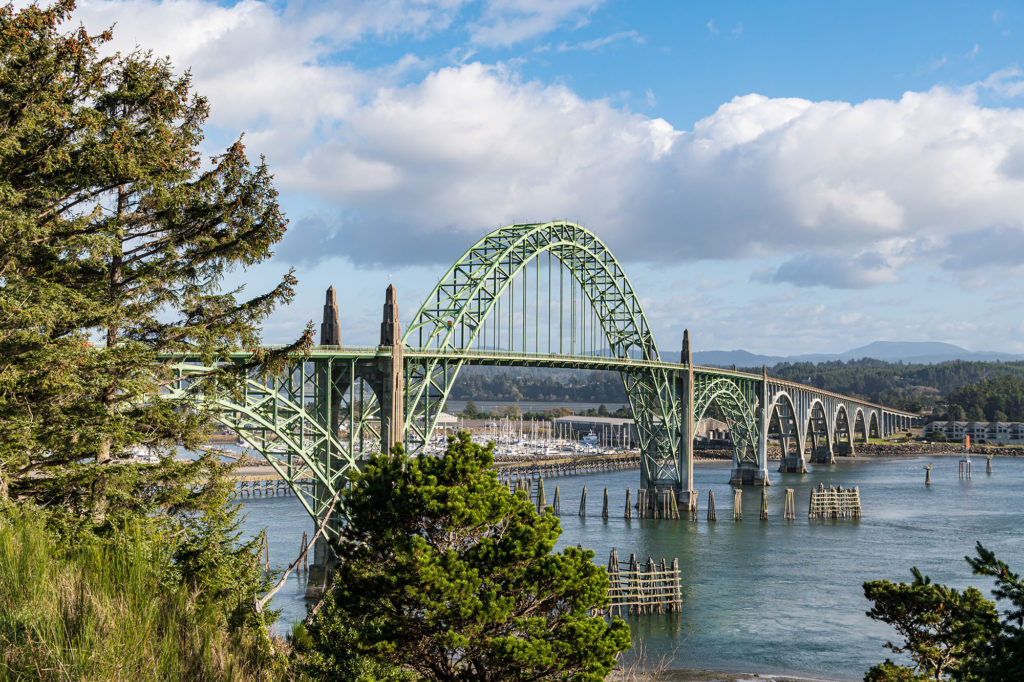
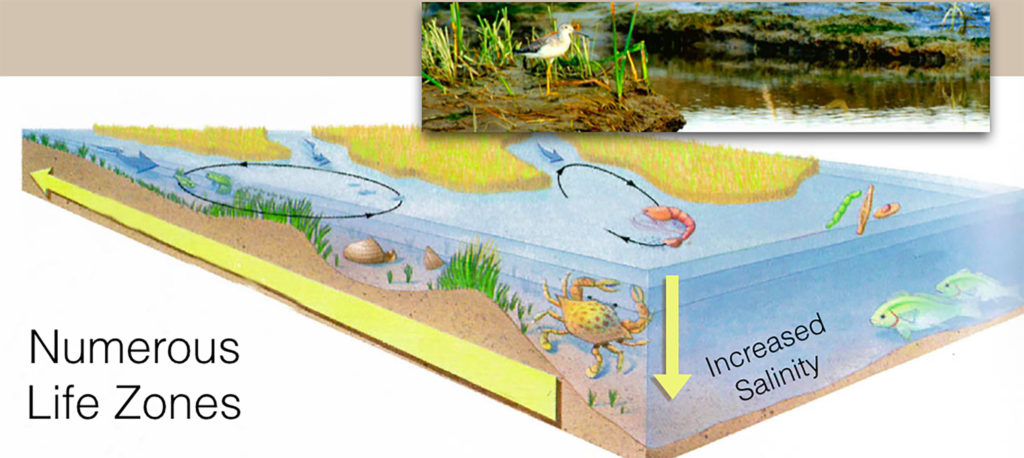
Since estuaries are a mix of freshwater from rivers and saltwater from ocean tides, the water chemistry is distinctive. The water is also typically shallow and slow-moving as water is spread out over the land, making it warmer and altering pH. All of this results in a unique environment with unique species.
Estuary organisms have access to light since the water is shallow, and high nutrients carried in by river and tidal waters. Do you expect the productivity to be high or low?
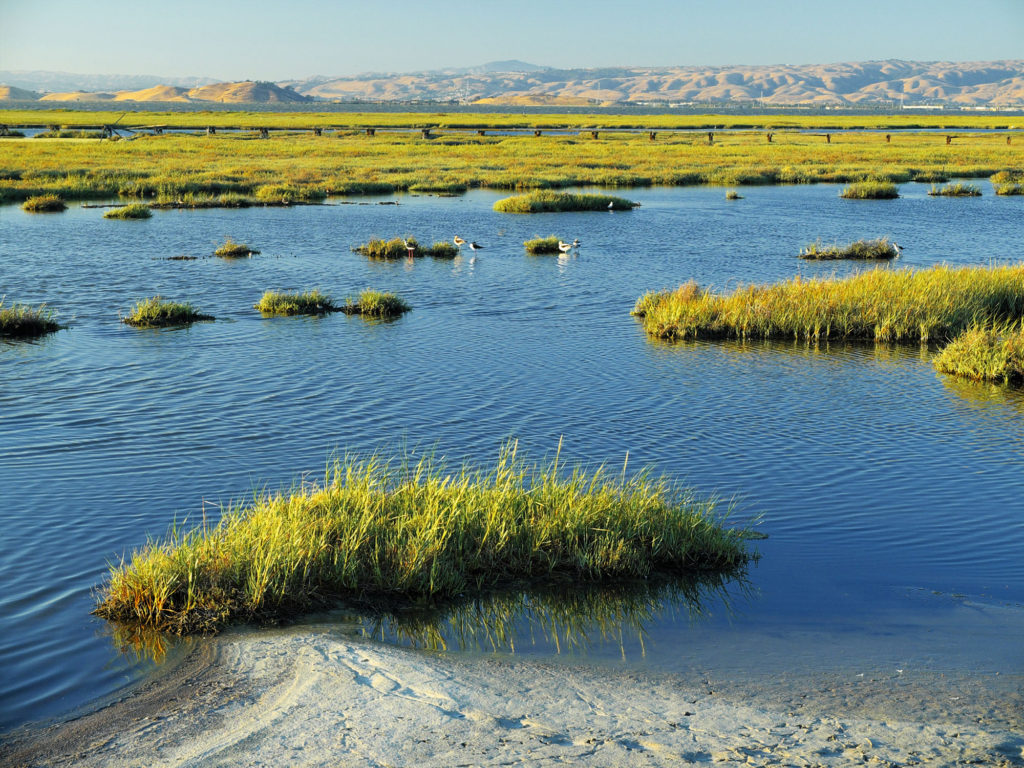
Productivity is typically high, similar to other wetland habitats.
Productivity can be high enough to support migratory species. Many species of waterbirds rely on estuaries during migration twice a year and ocean-going salmon can use estuaries to adjust to changing salinity between their river and ocean journeys.

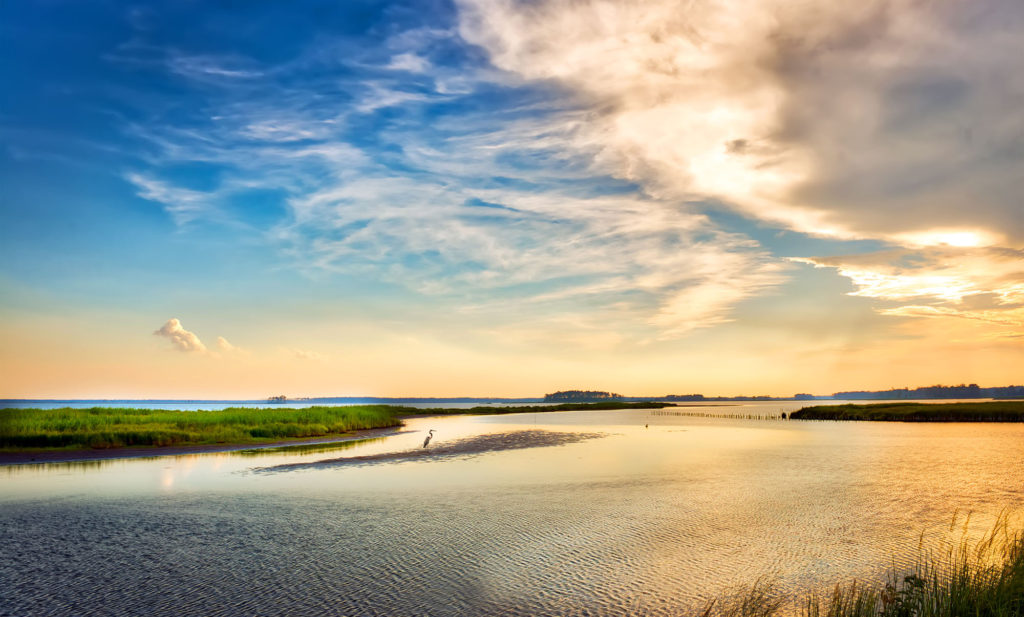
Check your knowledge. Can you:
-
list the correct order of habitats from river to ocean?
-
distinguish between bays and estuaries?
-
describe estuary productivity and relate it to migrating animals?